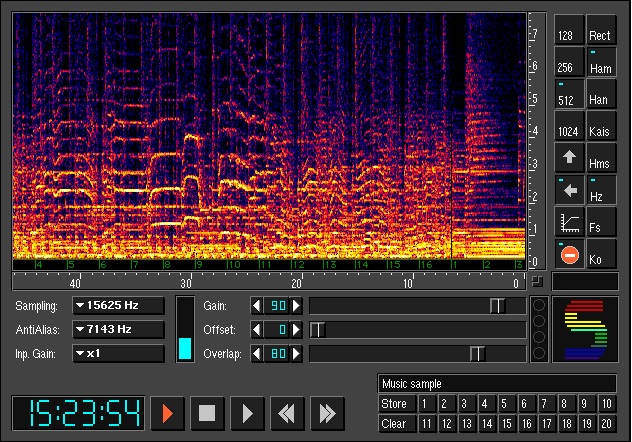
With help from technology, as usual. The first version was written around 1990, when the standard hardware was a 68030. So, I had to plug some computing muscle in the form of a Spectral Innovations (tm) DSP board. The card features an AT&T DSP-32 DSP chip with 25 Megaflops processing power, fast memory, and a range of analog daughter boards.
The DSP program, written in DSP-32 assembler, handles data acquisition, windowing, Fourier transform and data scaling up to pixel value. The host program, written in Object Oriented THINK Pascal, blasts the pixels on the screen and scrolls the picture. A "lab-style" control panel allows fast tuning of analysis.

Today, the processing power of a high-end Power PC is enough to fuel the analyzer. And the 16-bit audio capability of the Macintosh is suitable to acquire a signal in the audio frequency range with a good signal-to-noise ratio. So, we can get rid of DSP boards and run native on a Powermac. As many audio labs use DAT (Digital Audio Tape) as their recording medium, a direct interface to such a recorder uses an AES/EBU digital audio interface, such as Digi Design's (tm) ProTools, and RS-232 or HPIB link for recorder control.